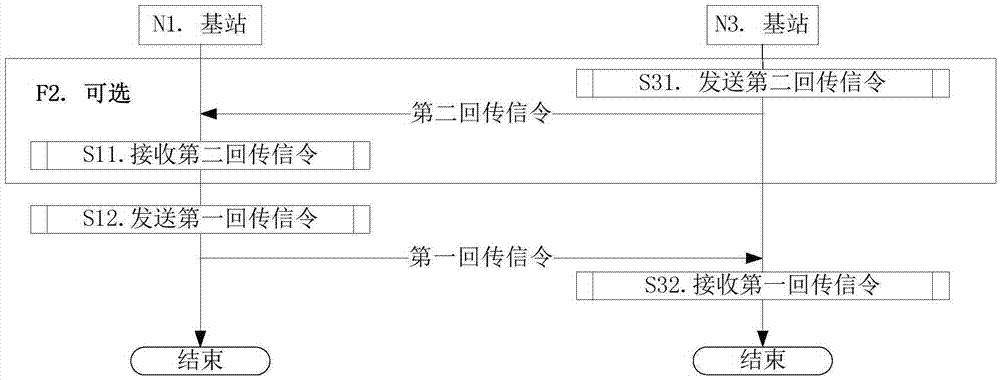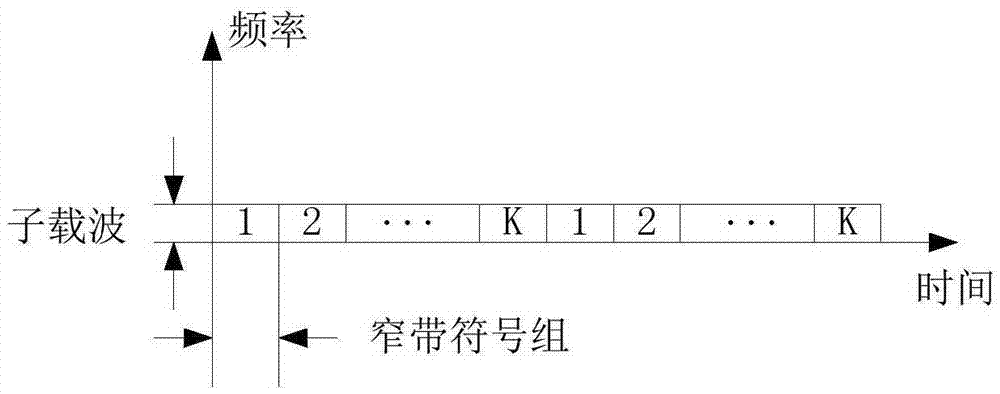Method and device in narrowband wireless transmission
A narrow-band, narrow-band communication technology, applied in the transmission system, wireless communication, digital transmission system, etc., to achieve the effect of reducing transmission efficiency, reducing the complexity of channel estimation, and saving redundancy
- Summary
- Abstract
- Description
- Claims
- Application Information
AI Technical Summary
Problems solved by technology
Method used
Image
Examples
Embodiment 1
[0145] Embodiment 1 illustrates the flow chart of uplink transmission, as attached figure 1 shown. attached figure 1 In , base station N1 is the maintenance base station of the serving cell of UE U2, and the steps identified in block F1 are optional.
[0146] The base station N1 sends a downlink signal in step S101, receives an uplink RS in step S102, and receives an uplink signal in step S103.
[0147] UE U2 receives a downlink signal in step S201, sends an uplink RS in step S202, and sends an uplink signal in step S203.
[0148] In Embodiment 1, the bandwidth occupied by the downlink signal in a time window is less than or equal to 180 kHz, and the downlink signal indicates the first target position. The downlink signal includes at least one of {characteristic sequence, high-layer signaling, physical layer signaling}. The bandwidth occupied by the uplink RS in one time window is less than or equal to 180 kHz, the uplink RS occupies T time windows in the time domain, and ...
Embodiment 2
[0155] Embodiment 2 exemplifies the flow chart of cooperation between base stations to avoid inter-cell interference, as shown in the attached figure 2 shown. attached figure 2 , the steps identified in box F2 are optional steps.
[0156]The base station N1 receives the second backhaul signaling in step S11, and sends the first backhaul signaling in step S12.
[0157] The base station N3 sends the second backhaul signaling in step S31, and receives the first backhaul signaling in step S32.
[0158] In Embodiment 2, the first return signaling indicates the first target location in the present invention, and the second return signaling indicates the third target location. The third target position is the equivalent of the first target position in a given cell, that is, it indicates that the time-frequency resource occupied by the uplink RS in the given cell is within the {time domain position, frequency domain position} within the time window At least for time domain locat...
Embodiment 3
[0162] Embodiment 3 illustrates a schematic diagram of K candidate positions of uplink RSs in ST transmission, as shown in the attached image 3 shown.
[0163] attached image 3 In , a square filled with a number or a letter K represents Q resource units of a narrowband symbol group on a subcarrier.
[0164] In Embodiment 3, for ST transmission, the downlink signal in the present invention indicates the first target position from K candidate positions, and the first target position is the time-domain position of the time-frequency resource occupied by the uplink RS in the time window .
[0165] As a sub-embodiment 1 of Embodiment 3, the uplink RS occupies one narrowband symbol group within the time window, that is, the M in the present invention is 1. attached image 3 The resource units represented by the squares with the same number in , belong to two time windows respectively.
[0166] As a sub-embodiment 2 of Embodiment 3, the uplink RS occupies 2 narrowband symbol g...
PUM
 Login to View More
Login to View More Abstract
Description
Claims
Application Information
 Login to View More
Login to View More - R&D
- Intellectual Property
- Life Sciences
- Materials
- Tech Scout
- Unparalleled Data Quality
- Higher Quality Content
- 60% Fewer Hallucinations
Browse by: Latest US Patents, China's latest patents, Technical Efficacy Thesaurus, Application Domain, Technology Topic, Popular Technical Reports.
© 2025 PatSnap. All rights reserved.Legal|Privacy policy|Modern Slavery Act Transparency Statement|Sitemap|About US| Contact US: help@patsnap.com



